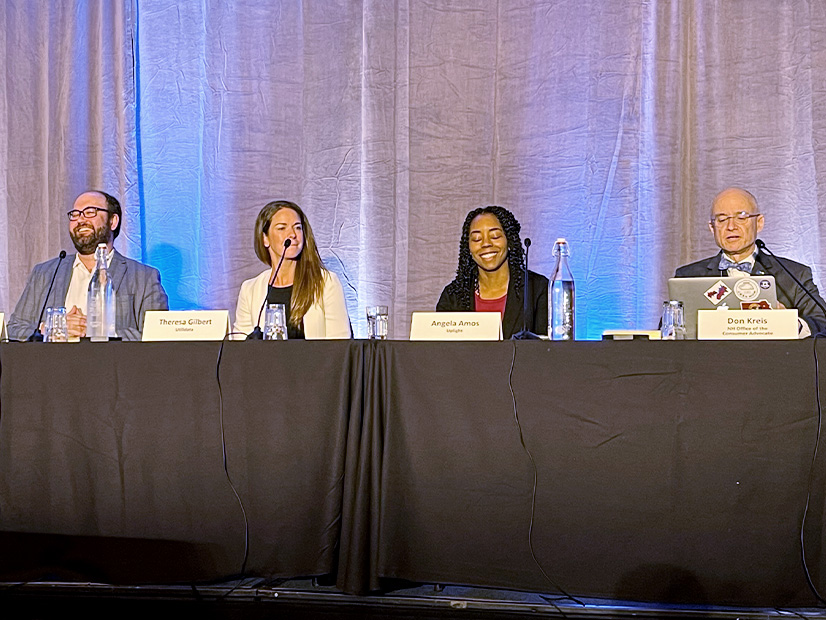
NEWPORT, R.I. — When a winter storm hit Texas in February, followed by devastatingly low temperatures, it set off an unmitigated catastrophe on its power grid that could have been alleviated by effective grid modernization, said Travis Kavulla, vice president of regulatory affairs for NRG Energy, one of the largest providers in Texas.
It led to a situation of haves and have nots in terms of who was in the dark when more than 20,000 MW of demand went unserved, Kavulla, a former Montana Public Service Commissioner, said during a panel Friday on grid modernization that closed the 73rd New England Conference of Public Utilities Commissioners.
“If people were able to rotate outages 12 hours at a time over the length of the event, I think it’s safe to say that we would not have seen the fatalities that we did; even if it would have been an enormous inconvenience, a huge failure in the industry all the same, but it would not have had the catastrophic consequences on human life.”
Texas is more advanced than New England in the deployment of smart meters, but Kavulla said they were not “operationalized at all” during the February storm. “You can use those smart meters to automatically disconnect customers; that’s functionality that they are deployed for in Texas today.”
Utilities, however, were not in a position to do that and turn them back on instead of “simply dropping entire circuits altogether,” Kavulla added. “What happened was if you got a critical customer on a particular circuit, that circuit could not be shed, and neighboring circuits had to be shed. That led to this have-or-have-not situation.”
NRG gathered 40 years of usage data on 5,000 residential customers in Texas. During the winter storm, these customers did not lose power but used double the electricity than when the temperature was higher than 90 degrees Fahrenheit.
“What happened in Texas was a huge surge in demand. If all the demand has been served in the state of Texas, it would have set an all-time peak record in the winter, but across all years and seasons in a state that often thinks of itself for a good reason as summer-peaking,” Kavulla said. “This demonstrates that if you could cycle electric heat effectively through the deployment of smart thermostats, you would have been able to keep more customers online and keep their homes if not toasty then at least livable.”
Angela Amos, director of market development and regulatory innovation for Uplight, said customers should not have an antagonistic relationship toward their utility or the deployed technology inside their home.
“The way that you can improve that process is to help people understand what options are available to them, what they can install in an affordable way, of course, so that they are pre-emptively prepared to participate before things go wrong,” Amos said.
Theresa Gilbert, vice president of external affairs for software company Utilidata, said that baseline expectations need to be reframed by utilities. Gilbert said the current utility infrastructure was built predominantly using hardware.
“I think we need to look at the dynamic of now what is the combination of hardware and software solutions,” Gilbert said. “There’s a lot we can do in terms of using real-time data to manage that load before you get to a point where you need to upgrade a transformer.”
Kavulla said New England has set up a retail market to drive competitive suppliers to build a commodity and not do a lot of innovation. In contrast, different retail market designs leverage the innovation of the competitive market, he said.
“Candidly, one of the ironies is that I talk to a lot of state regulators about wholesale market design, [but] it sometimes feels like state regulators spend more of their time talking about wholesale market design that they don’t regulate, and not enough time talking about the retail market design over which they have exclusive jurisdiction,” Kavulla said.


